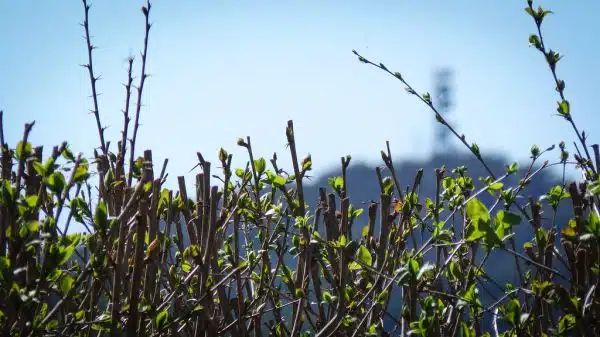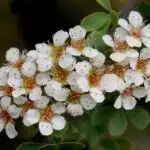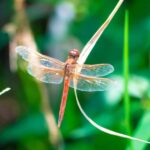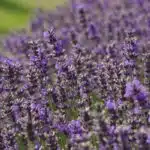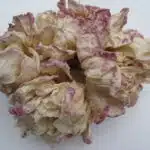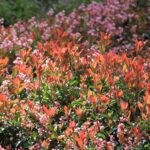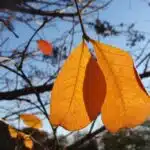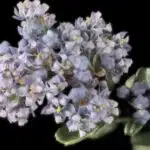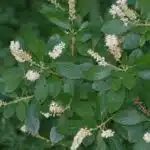Pruning shrubs is a fundamental task that every horticulturalist should master. It involves the removal of dead, diseased or overgrown parts of the plant to promote healthy growth and improve its overall appearance. Pruning also encourages better air circulation and light penetration, resulting in stronger branches and more abundant flowering.
Proper pruning techniques not only ensure the longevity of your shrubs but also protect them from pests and diseases. However, many gardeners are hesitant to prune as they fear damaging their plants or removing too much foliage. In this article, we will discuss how to prune shrubs effectively by understanding their growth habits, identifying potential problem areas and using the right tools for the job. We hope this guide will inspire you to take on your pruning tasks with confidence and skill, ultimately leading to healthier and happier plants in your garden.
Benefits Of Pruning Shrubs
Shrubs are like the hair on our heads. Just as a haircut is required to keep hair healthy, pruning is necessary to maintain shrubs’ health and beauty. Pruning is an essential horticultural practice that can provide numerous benefits, including ensuring plant vitality and promoting healthy growth.
Pruning frequency plays a crucial role in maintaining shrub health. Most shrubs require annual pruning to remove dead or diseased branches, promote new growth and shape the plant. However, different shrubs have unique growth rates, which means that they require varying degrees of pruning. For example, rapid-growing shrubs may need more frequent pruning than slow-growing ones.
Regular pruning can help control the size and shape of your shrub while also encouraging new growth. By removing dead or diseased branches, you can prevent pests from infesting your plants. Additionally, when done correctly, pruning can also improve flowering and fruiting by redirecting nutrients towards healthy branches.
Understanding the growth habits of your shrubs is essential when it comes to deciding how to prune them effectively. In the following section, we will delve into understanding growth habits in more detail to help you make informed decisions about how best to care for your plants.
Understanding Growth Habits
- Shrubs are woody plants that can vary widely in size and shape, and identifying the shrub type is the first step in understanding its growth habits.
- Different shrub species can be characterized by their growth habit, which can range from upright and spreading to weeping and prostrate.
- Upright shrubs generally grow vertically, while spreading shrubs tend to grow wider and wider as they mature.
- Weeping shrubs are often characterized by their cascading branches and prostrate shrubs are generally low-growing and spread horizontally.
Identifying Shrub Types
Identifying Shrub Types is an essential step in understanding the growth habits of shrubs. Differentiating between deciduous and evergreen shrubs is the most basic way to identify them. Deciduous shrubs lose their leaves in the fall, while evergreens retain their foliage year-round. Understanding the growth patterns of different shrub species follows on from correctly identifying them.
Deciduous shrubs have a dormant period in winter when they stop growing. Come spring, they will start to grow again and continue through to fall when they begin to drop their leaves. Evergreen shrubs do not have a dormant period, so they continue to grow throughout the year. It is important to know this so that you can prune your shrubs at the right time, as pruning at the wrong time can damage or stunt growth.
Another way to differentiate between types of shrubs is by branching patterns. Some shrub species have a single stem with lateral branches growing out from it; these are called “single-stemmed” or “tree-like.” Other types of shrubs have multiple stems emerging from near ground level and are known as “multi-stemmed.” Identifying your particular type of shrub will help you understand how best to maintain and prune it for optimal growth and health.
Identifying Growth Habits
Understanding growth habits is crucial in maintaining the health and beauty of your shrubs. It involves identifying the plant anatomy, knowing when to prune, and how to prune for rejuvenation. Identifying growth habits starts with recognizing deciduous and evergreen shrubs. Deciduous shrubs have a dormant period during winter, while evergreens maintain their foliage year-round. Knowing this information helps you determine the best time to prune your shrubs.
In addition to identifying deciduous and evergreen shrubs, it is also essential to recognize branching patterns. Some shrub species have a single stem with lateral branches growing out from it, making them ‘single-stemmed’ or ‘tree-like.’ Meanwhile, other types of shrubs have multiple stems emerging from near ground level and are known as ‘multi-stemmed.’ Understanding this information will help you identify your particular type of shrub and determine the best pruning technique for optimal growth.
Identifying growth habits is only the first step in understanding how to care for your shrubs. Pruning plays a significant role in promoting healthy growth habits by removing dead or diseased branches that can harm your plants’ overall health. Pruning for rejuvenation involves cutting back old wood to encourage new growth. By taking these steps, you can ensure that your shrubs remain healthy, vibrant, and beautiful year after year.
Identifying Dead And Diseased Areas
Spotting symptoms of dead and diseased areas is crucial for proper shrub pruning. Dead areas will be brown and brittle while diseased areas may have discoloration, spots, or lesions on the leaves or stems. It is important to identify these areas so that they can be pruned before further damage occurs.
Preventing the spread of disease is a critical part of shrub maintenance. Once a plant has become infected, it can quickly spread to other plants in the area. Disinfecting pruning tools between each cut is an essential step in preventing the spread of disease. Additionally, removing all debris from around the plant after pruning will help to eliminate any potential sources of infection.
Properly identifying dead and diseased areas and preventing their spread are key components of successful shrub pruning. By taking these steps, you can ensure that your shrubs remain healthy and vibrant. The next step in proper pruning technique is determining optimal pruning time, which will be discussed in the following section.
Determining Optimal Pruning Time
- In order to determine the optimal pruning time for shrubs, it is important to examine the overall health of the plant.
- Monitoring the growth cycles of the plant throughout the season can provide valuable information to inform pruning decisions.
- Assessing the environmental factors of the local area, such as temperature, humidity, and precipitation, is essential for determining the appropriate pruning schedule.
- Careful observation of the plant’s growth patterns can be used to identify when pruning will be most beneficial.
- Pruning should be done at a time that does not interfere with the natural growth cycle of the plant.
- A comprehensive pruning strategy should be implemented to ensure the health of the shrub and promote a robust growth cycle.
Examining Plant Health
In order to determine the optimal time for pruning shrubs, it is essential to examine the plant health. A thorough plant diagnosis will help identify any issues that may be affecting the growth patterns of the shrub. This will enable horticulturalists to make informed decisions about when and how to prune.
When examining plant health, it is important to consider factors such as disease, pests, and nutrient deficiencies. These issues can all impact the overall health of a shrub and affect its ability to grow properly. By identifying these problems early on, horticulturalists can take steps to address them and ensure that the shrub is in good condition before pruning.
Another important aspect of examining plant health is understanding the growth patterns of the shrub. Different types of shrubs have different growth habits, and this can impact when they should be pruned. For example, some shrubs produce flowers on new growth while others produce flowers on old wood. Understanding these growth patterns will help horticulturalists determine when to prune in order to achieve optimal results.
In summary, examining plant health is a crucial step in determining the optimal time for pruning shrubs. By conducting a thorough plant diagnosis and understanding growth patterns, horticulturalists can make informed decisions about when and how to prune in order to promote healthy growth and achieve desired results.
Monitoring Growth Cycles
As horticulturalists, our goal is to ensure that the shrubs we care for are healthy and thriving. One way to achieve this is by monitoring their growth cycles. Tracking progress throughout the year allows us to make seasonal adjustments as needed in order to promote optimal growth and flowering.
Monitoring growth cycles involves keeping track of when the shrub produces new growth, blooms, and goes dormant. This information can be used to determine when pruning should take place. For example, if a shrub blooms on old wood, it should be pruned immediately after flowering so as not to disrupt next year’s blooming cycle. On the other hand, if a shrub blooms on new growth, it can be pruned in late winter or early spring before new growth appears.
In addition to informing pruning decisions, tracking growth cycles can also help identify any issues that may be affecting plant health. If a shrub fails to produce new growth or blooms at the expected time, it may indicate a problem such as nutrient deficiency or pest infestation. By closely monitoring growth cycles, horticulturalists can address these issues early on and ensure that the shrub remains healthy and productive for years to come.
Assessing Environmental Factors
As horticulturalists, we understand the importance of determining the optimal pruning time for shrubs. However, it is crucial to assess environmental factors before deciding on the best time to prune. One essential factor to consider is soil quality. Soil assessment involves evaluating pH levels, nutrient content, and drainage capabilities. It is important to ensure that the shrub receives enough nutrients and moisture from the soil to support new growth after pruning.
Another critical factor in determining optimal pruning time is sunlight exposure. Evaluating sunlight involves assessing the amount and intensity of light that reaches the shrub throughout the day. Shrubs require different amounts of sunlight depending on their species and growing conditions. Some shrubs thrive in full sun, while others prefer partial shade. Assessing sunlight exposure helps determine if pruning should be done during periods of high or low light intensity.
In conclusion, assessing environmental factors such as soil quality and sunlight exposure is crucial when determining optimal pruning time for shrubs. These factors affect plant health and growth, thus influencing when pruning should take place. As horticulturalists, we must carefully evaluate these factors before making any decisions about pruning a shrub. By doing so, we can promote healthy growth and ensure that our shrubs remain productive for years to come.
Choosing The Right Tools
According to a survey conducted by the American Society of Landscape Architects, 94% of homeowners said that they want to have a beautiful yard. Pruning shrubs is one way to enhance the beauty of your yard, but it’s important to have the right tools for the job. Choosing the right tools can make pruning easier, faster, and safer.
When it comes to tool maintenance, there are a few key things to keep in mind. First, always clean your tools after each use. This helps prevent the spread of disease from one plant to another. Second, sharpen your tools regularly. Dull blades can damage plants and make pruning more difficult than it needs to be. Finally, store your tools in a dry place out of direct sunlight. Moisture and UV rays can cause rust and other damage.
Safety precautions are also important when pruning shrubs. Always wear gloves and eye protection when using sharp tools like pruning shears or hedge trimmers. Make sure you have good footing and a stable base before reaching up high or using long-handled tools like loppers or pole pruners. And never try to prune near power lines – contact a professional if you need help with tall trees or branches.
To choose the right tools for pruning shrubs, consider the size and type of plants you’ll be working with. Here are some tips:
Hand pruners: These are great for small stems less than 1/4 inch in diameter.
Bypass pruners: These work like scissors and give cleaner cuts.
Anvil pruners: These have a flat blade that cuts against a flat surface – best for deadwood.
Loppers: Use these for larger stems between 1/4 inch and 2 inches in diameter.
Bypass loppers: These give cleaner cuts on live wood.
Anvil loppers: These work best on deadwood.
By keeping your tools well-maintained and practicing safety precautions, you can make pruning shrubs a more enjoyable experience. Next, we’ll discuss the importance of making clean cuts to promote plant health.
Making Clean Cuts
Clean Cut Techniques for Pruning Shrubs
Making clean cuts is a crucial aspect of pruning shrubs. This technique involves using sharp and clean tools to ensure that the cut is made as smoothly and accurately as possible. One of the ways to achieve this is by using bypass pruners, which have two blades that pass by each other to make a precise cut. On the other hand, anvil pruners crush the stem, leaving a jagged edge that may damage the plant.
Another aspect of clean cut techniques is avoiding damage to the plant. To do this, it’s important to know where and how to make the cut. For example, when pruning back branches on a shrub, it’s best to make cuts just above a lateral bud or branch intersection rather than cutting through the middle of a branch. This ensures that the plant can heal quickly and minimize damage. Additionally, it’s vital to avoid tearing or ripping bark when making cuts as it exposes the plant to disease.
In conclusion, clean cut techniques are essential for maintaining healthy plants when pruning shrubs. Using bypass pruners and avoiding damaging cuts are key factors in making precise cuts without causing harm. In addition to these techniques, sterilizing your tools before and after use is also crucial in preventing disease transmission among plants.
Sterilizing Your Tools
Sterilizing your tools is a crucial step in maintaining the health of your shrubs. The importance of sterilization cannot be overstated, as it helps prevent the spread of harmful bacteria and diseases that can infect your plants. Failure to sterilize your tools before pruning can lead to severe damage, which may ultimately result in death for the plant.
There are various recommended methods for sterilizing your pruning tools, including using rubbing alcohol or bleach to disinfect the blades. You should always ensure that your tools are clean and free from any debris before beginning the sterilization process. It’s also essential to follow the manufacturer’s instructions when using chemical solutions to avoid damaging the metal parts of your tools.
To paint a picture for you, below are three recommended sterilization methods:
- Rubbing alcohol: Dip a cloth into rubbing alcohol and use it to wipe down the blades thoroughly. Allow the alcohol to evaporate completely before using the tool on another plant.
- Bleach solution: Mix one-part bleach with nine parts water in a container large enough to hold the tool’s blades fully submerged for at least five minutes.
- Flame sterilization: Hold the blade over an open flame for several seconds until it turns red-hot, then let it cool down before pruning.
In conclusion, proper sterilization is an essential aspect of maintaining healthy shrubs and should not be overlooked by any horticulturalist. By following recommended sterilization methods such as those outlined above, you can help prevent infections from spreading between plants and ensure that each plant receives individual attention during pruning. With this knowledge, we can now move on to learning about techniques for specific shrub types without worrying about inadvertently causing harm due to poor sterilization practices.
Techniques For Specific Shrub Types
Pruning boxwoods can be beneficial for their growth and development. It is recommended to prune boxwoods in late winter or early spring before new growth begins. Trimming rhododendrons should be done judiciously. Dead, diseased or broken branches should be cut back to a healthy bud. Shaping yews requires regular maintenance since they have a tendency to become overgrown. To maintain a desired shape, prune back the stem tips and lateral branches to the desired length. Shearing can also be used to shape yews into a more uniform form. It is important to avoid cutting back too far into old wood as this can potentially cause damage to the plant.
Pruning Boxwoods
Boxwood shrubs are a popular choice for hedges, borders, and topiaries due to their evergreen foliage and compact growth habit. However, maintaining the desired shape and size of these shrubs requires regular pruning. Boxwood varieties differ in their growth habits, with some growing taller and wider than others, so it is important to select the appropriate pruning technique based on the specific variety.
Pruning frequency for boxwoods will depend on the desired shape and size of the shrub. It is recommended to prune boxwoods at least once a year in late winter or early spring before new growth emerges. This allows for any damaged or diseased branches to be removed, as well as shaping the shrub. If a more formal look is desired, boxwoods can be pruned two to three times per year to maintain a neat appearance.
When pruning boxwoods, it is important to use sharp pruning shears or hedge trimmers to make clean cuts and avoid damaging the plant. Cut back stems just above a leaf node or bud to promote bushier growth. Over-pruning or removing too much foliage can weaken the plant and leave it vulnerable to pests and diseases. By following proper pruning techniques and timing, boxwood shrubs can be maintained for years of beautiful landscapes.
Trimming Rhododendrons
Rhododendron varieties are a popular choice for their stunning blooms and ability to thrive in various climates. However, they require proper pruning techniques to maintain their health and appearance. Trimming rhododendrons is necessary to remove dead or diseased branches, promote new growth, and shape the plant. It is important to understand the specific needs of each variety before pruning.
Common mistakes when trimming rhododendrons include over-pruning and cutting back too much foliage at once. This can weaken the plant and make it more susceptible to pests and diseases. Additionally, improperly timed pruning can result in missed opportunities for promoting new growth or removing damaged branches. It is recommended to trim rhododendrons immediately after flowering in late spring or early summer.
When trimming rhododendrons, it is important to use sharp pruning shears or loppers to make clean cuts without damaging the plant. Cut back stems just above a leaf node or bud to promote bushier growth. Avoid cutting into the woody stem as this can cause damage that may not heal properly. By following proper trimming techniques and timing, rhododendrons can continue to bloom beautifully year after year.
Shaping Yews
As horticulturalists, it is essential to understand various pruning techniques for specific shrub types. One of the most popular evergreen shrubs used for creating topiary shapes in gardens is Yew. Yews are known for their dense foliage and ability to withstand heavy pruning. However, proper yew pruning techniques are necessary to maintain their health and appearance.
Shaping yews requires careful planning and execution. Before starting the pruning process, it is important to identify the desired shape and size of the plant. This will help determine which branches need to be removed or trimmed back. When trimming yews for shaping purposes, it is recommended to use hand shears instead of electric trimmers as they provide more control over the cuts being made.
Yews can be shaped into various topiary designs such as cones, spirals, or balls. To create these shapes, prune new growth regularly throughout the growing season while maintaining a consistent size and shape. It is also important to avoid cutting back too much foliage at once as this can weaken the plant and make it more susceptible to pests and diseases. By following proper yew pruning techniques, gardeners can create stunning topiary designs while maintaining the health of their plants.
Shaping For Aesthetics
After mastering the techniques for specific shrub types, it is important to consider shaping for aesthetics. Creative designs can be achieved through careful pruning and shaping of shrubs. Pruning is not only about maintaining the health of the shrub, but also about creating an aesthetically pleasing landscape.
One way to achieve creative designs is through selective pruning. This involves removing specific branches to highlight the natural shape of the shrub. Selective pruning can also be used to create unique shapes, such as topiary or espalier designs. However, it is important to keep in mind that over-pruning can lead to weakened shrubs and potential damage.
Pruning mistakes are common and can have negative effects on the health and appearance of a shrub. One mistake to avoid is topping, which involves cutting off the top of a shrub without considering its natural form. This can lead to weak growth and an unattractive shape. Another mistake is over-pruning, which can remove too much foliage and lead to sunscald or disease susceptibility.
Transition: While creative designs are important in shaping for aesthetics, reducing overall size is another crucial aspect of pruning that must be considered for healthy and attractive shrubs.
Reducing Overall Size
- Pruning shrubs can be done effectively with the use of hand pruners, loppers, and pole pruners for taller shrubs.
- Selective pruning is a technique that involves removing only specific parts of a shrub in order to maintain its desired shape and size.
- When pruning shrubs, it is important to understand how a shrub will respond to pruning in order to achieve the desired outcome.
- Pruning of shrubs should be done at the right time of the year in order to promote new growth and maintain the desired shape and size.
Using Tools
Maintaining the size of shrubs is essential to keep them healthy and aesthetically pleasing. To achieve this, pruning is a necessary practice that involves reducing the overall size of the plant. Using tools for pruning requires careful consideration, as it can affect both the longevity of the tool and the safety of the user.
Tool maintenance is crucial when pruning shrubs since it ensures that they function correctly and remain in good condition. Tools should be kept clean and sharp to prevent damage to the plant and reduce stress on the tool itself. Regular oiling and sharpening are necessary to prevent rusting or blunting, which can lead to ineffective cuts or even injury.
Safety precautions must also be taken when using tools for pruning shrubs. Wear protective gear such as gloves, safety glasses, and sturdy shoes to protect against flying debris or cuts from sharp blades. Before starting any work, assess the area around the plant and remove any potential hazards such as stones or fallen branches that could cause an accident. Always use tools designed for specific tasks; loppers for larger branches while hand pruners are used for smaller ones. Adhering to these precautions will ensure successful outcomes during pruning while keeping oneself safe from injuries caused by improper use of tools.
Selective Pruning
Reducing the overall size of shrubs is a necessary practice in maintaining their health and aesthetic appeal. However, indiscriminate pruning can result in severe damage to the plant, leading to stunted growth or even death. Selective pruning is a technique that involves removing only specific branches or portions of the plant, rather than cutting across the entire structure.
Selective pruning is useful when shaping shrubs into specific forms or removing damaged or diseased parts while promoting healthy growth. It also allows for better control of the size and shape of the plant, ensuring that it remains visually appealing without compromising its structural integrity. However, not all plants require selective pruning, and over-pruning can lead to reduced vigor and susceptibility to pests and diseases.
To achieve desired results through selective pruning, horticulturalists must consider several factors such as timing, location, and frequency. Pruning during the dormant season promotes new growth in spring while reducing stress on the plant. Cutting near buds encourages branching while removing older wood stimulates new growth. It’s essential to avoid cutting too close to the trunk or leaving stubs that can attract insects or fungi. Additionally, excessive pruning should be avoided as it weakens the plant’s ability to produce food through photosynthesis.
In conclusion, selective pruning is an effective technique for reducing the overall size of shrubs while promoting healthy growth. Horticulturalists must exercise caution when using this technique by considering factors such as timing, location, and frequency. Over-pruning can harm plants rather than benefit them; hence it’s crucial to understand which species require selective pruning and how much should be done based on their unique characteristics.
Thinning For Airflow And Light Penetration
Pruning frequency is a crucial factor in maintaining the health and beauty of shrubs. Proper thinning techniques help to increase airflow and light penetration, which are essential for plant growth. Thinning involves selectively removing branches from the interior of the shrub to allow for more light and air to reach the center.
Thinning for airflow should be done selectively, removing only a few branches at a time. Over-thinning can leave the shrub looking sparse and unhealthy. When thinning, start by removing any dead, broken or diseased branches. Next, remove any branches that are crossing or rubbing against each other as these can cause wounds that attract pests and diseases.
Proper thinning techniques also involve removing small branches that are growing inward towards the center of the shrub. This is important because it allows larger branches to grow outwards where they can receive more light and airflow. Overall, thinning should be done regularly but lightly so as not to stress the plant or create large gaps in its structure.
- A well-thinned shrub will have a fuller appearance with fewer dead spots.
- Increasing airflow through proper pruning can help reduce pest infestations.
- Proper pruning techniques can improve fruit production on fruit-bearing shrubs.
- Regular maintenance of your shrubs through proper pruning techniques can improve curb appeal and add value to your property.
With proper attention to detail, your efforts in maintaining healthy shrubs will pay off significantly in the long run. However, dealing with overgrown shrubs may require more drastic measures than simple thinning techniques alone.
Dealing With Overgrown Shrubs
Thinning for airflow and light penetration is an essential step in pruning shrubs. However, sometimes even with thinning, shrubs can become overgrown, blocking walkways or growing into other plants. When this happens, it’s time to take more drastic measures to bring the shrub back under control.
One option for dealing with overgrown shrubs is pruning them to encourage flowering. This involves removing some of the older wood and shaping the shrub so that light can reach the interior branches. By doing this, you’ll stimulate new growth and encourage more flowers to bloom. It’s important to prune at the right time of year depending on the type of shrub you have.
After pruning your overgrown shrub, it’s important to take care of it properly so that it continues to thrive. Mulching techniques and composting options are great ways to provide your plant with nutrients and keep weeds at bay. You can use organic materials like leaves, grass clippings, or wood chips as mulch around the base of your shrub. Composting food scraps is another way to provide your plant with a nutrient-rich soil amendment that will help it grow strong and healthy. With proper care, your once-overgrown shrub will become a beautiful addition to your garden once again!
Pruning To Encourage Flowering
Pruning is an essential practice that encourages flowering in shrubs. Pruning should be done strategically to promote the growth of new shoots, which results in a profusion of flowers. Pruning for rejuvenation is an effective way to encourage flowering. This technique involves cutting back the branches of shrubs to a height of about 20cm from the ground level.
Pruning for shape and structure also plays a significant role in encouraging flowering. It entails removing any dead or diseased parts of the shrub to prevent them from sapping the plant’s energy. Additionally, pruning helps to control the size and shape of the shrub, which allows light and air circulation within it, promoting healthy and robust growth.
To encourage flowering in your shrubs, you should consider these three tips:
Timing: The best time to prune your shrubs is during their dormant period, typically in late winter or early spring before they start growing.
Cutting Technique: Use sharp pruning shears or saws to make clean cuts. Rough cuts can damage the plant tissue and cause disease.
Amount: Avoid over-pruning your shrubs as this can weaken them and reduce their ability to produce flowers.
By following these tips on pruning for rejuvenation and shape and structure, you can ensure that your shrubs will produce abundant flowers year after year. Aftercare and maintenance are crucial aspects of ensuring your plants remain healthy after pruning, which we will discuss next.
Aftercare And Maintenance
Pruning shrubs is an essential task that ensures their healthy growth, shape, and flowering. According to a recent survey by the National Gardening Association, nearly 70% of American households have some type of shrub in their yard. Pruning is a crucial aspect of maintaining these plants, but it can be challenging for inexperienced gardeners.
Common mistakes that people make when pruning shrubs include over-pruning, incorrect timing, and using dull or dirty tools. Over-pruning can cause shock to the plant and result in stunted growth or death. Timing is critical because pruning at the wrong time can remove buds or flowers, which may affect the overall health and appearance of the shrub. Using dirty or dull tools can introduce diseases to the plant and leave jagged cuts that take longer to heal.
The frequency of pruning depends on several factors such as the type of shrub, its age, size, and location. Some shrubs require annual pruning while others need it every few years. A general rule of thumb is to prune after flowering has finished for spring-blooming shrubs and before new growth appears for summer-blooming ones. In the next section about aftercare and maintenance, we will discuss how to troubleshoot common pruning issues that arise during this process.
Troubleshooting Common Pruning Issues
Overcoming challenges is a common occurrence when pruning shrubs. One of the biggest issues faced by gardeners is over-pruning. This occurs when too many branches are removed, resulting in a shrub that looks unbalanced and unhealthy. To prevent this problem, it is important to understand the growth habit of the shrub and only remove what is necessary. A good rule of thumb is to never remove more than one-third of the plant at a time.
Another issue that can arise during pruning is improper technique. Using dull or dirty tools can damage the plant and inhibit its ability to heal properly. It is crucial to use sharp, clean tools when pruning to make precise cuts and avoid damaging healthy tissue. Additionally, improper timing of pruning can lead to issues such as stunted growth or susceptibility to disease. Researching the specific needs of each type of shrub will help determine the best time for pruning.
Preventative measures can be taken to avoid common pruning issues altogether. Regular maintenance such as removing dead or diseased branches can promote healthy growth and reduce the need for extensive pruning later on. Proper spacing between shrubs will also help prevent overcrowding, allowing for adequate air circulation and reducing the risk of disease spread. By taking these measures, gardeners can ensure that their shrubs remain healthy and vibrant year-round without encountering common pruning issues.
In conclusion, overcoming challenges during shrub pruning requires careful attention to detail and an understanding of preventative measures. Gardeners should strive for proper technique when using sharp tools and timing their pruning appropriately based on specific species needs. By utilizing regular maintenance practices and ensuring proper spacing between plants, gardeners can avoid common issues altogether and enjoy beautiful, healthy shrubs in their garden space for years to come.
Conclusion
Pruning shrubs is a critical task that every gardener should undertake to ensure healthy growth and beautiful blooms. Knowing the benefits of pruning, understanding growth habits, identifying dead and diseased areas, determining optimal pruning time, choosing the right tools, dealing with overgrown shrubs, pruning to encourage flowering, aftercare and maintenance, and troubleshooting common pruning issues can help achieve an attractive garden. Pruning not only improves plant appearance but also promotes air circulation, sunlight penetration, new growth production, and disease control.
Understanding the unique characteristics of each shrub species is fundamental for proper pruning techniques. Dead or diseased areas must be identified early on to prevent further damage to the plant. Optimal pruning time varies depending on the shrub type and location. Choosing appropriate tools ensures clean cuts without damaging the plant. Overgrown shrubs require strategic cutting to restore their shape and size while also promoting new growth. Pruning at the right time can enhance flowering by removing old blooms and encouraging new ones. Aftercare and maintenance are essential for ensuring good health of pruned plants.
In conclusion, pruning shrubs is a crucial aspect of gardening that requires knowledge of plant biology and horticultural practices. Proper pruning techniques can improve plant health and aesthetics while preventing diseases from spreading throughout your garden. Maintaining healthy plants requires regular care such as watering, fertilizing, mulching, pest control measures and monitoring for any signs of disease or pests. By following these guidelines for successful pruning techniques you will enjoy a thriving garden full of beautiful flora all year round!
Image Credits
- “Newly Pruned Shrub” by Theen … (featured)

